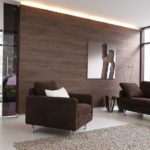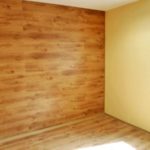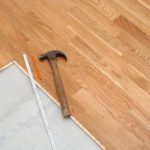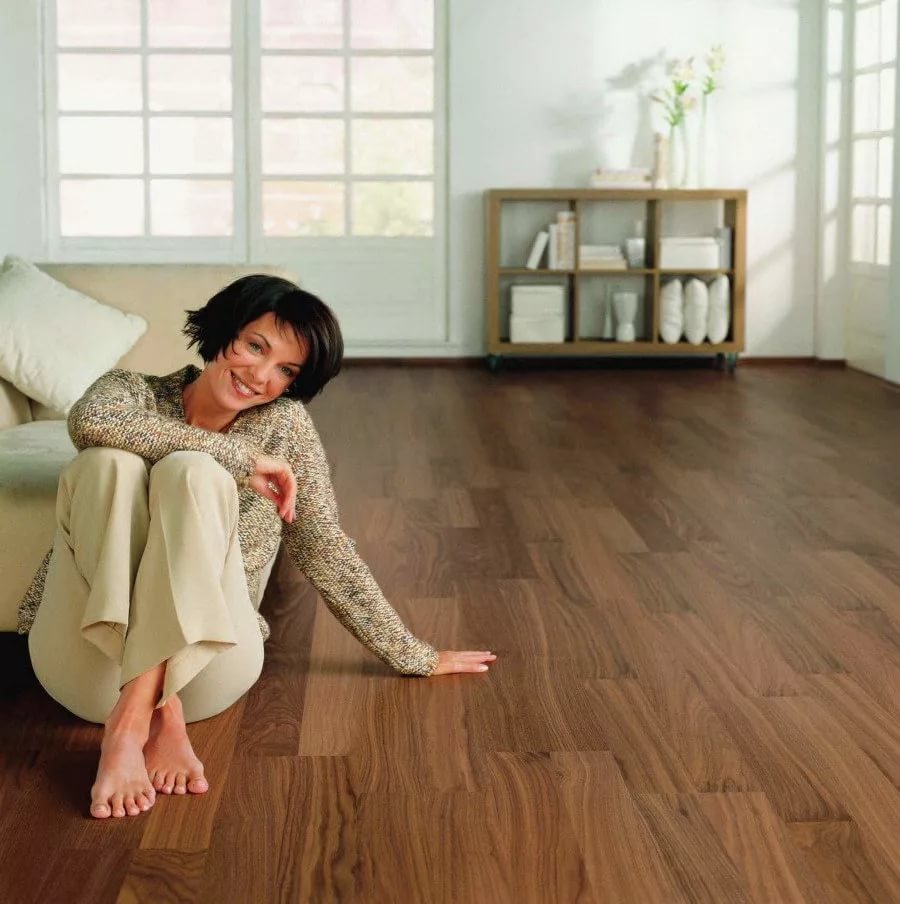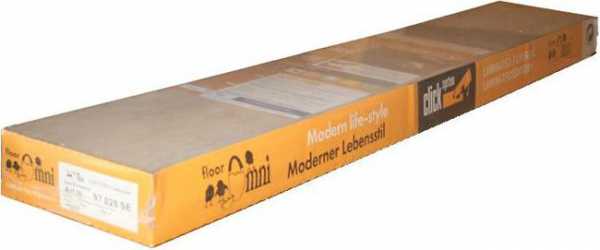Laminate on the wall mounting methods
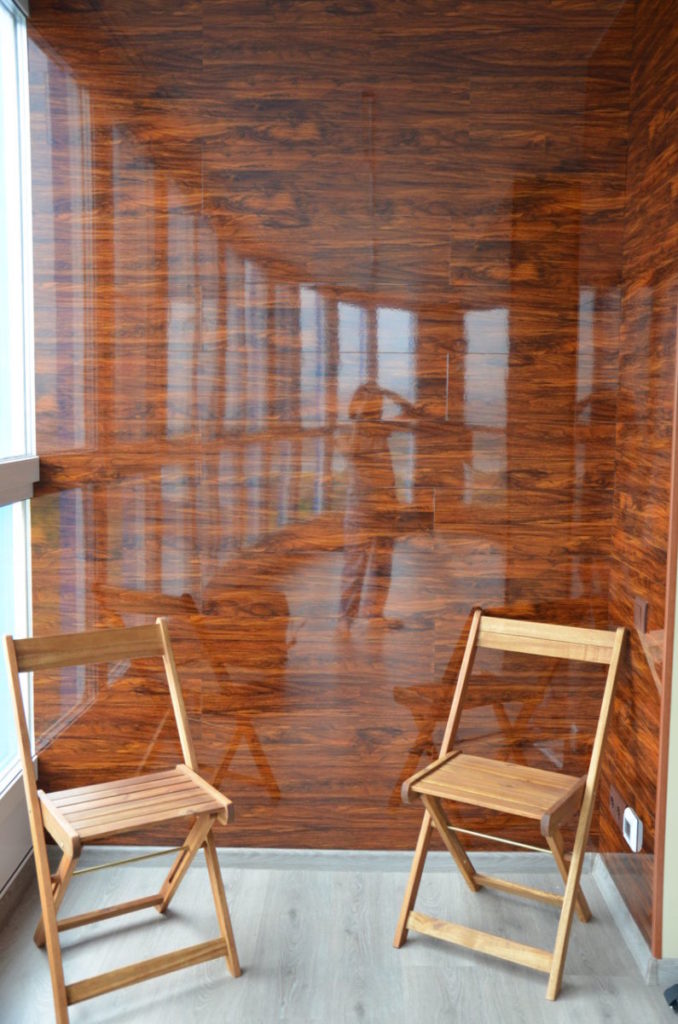 Some time ago, when asked what kind of wall covering to use, one could get a definite answer: wallpaper, MDF panels or plastic panels. Now the choice has expanded somewhat. They began to use floor coverings as wall coverings, the original purpose of which was to cover the floor.
Some time ago, when asked what kind of wall covering to use, one could get a definite answer: wallpaper, MDF panels or plastic panels. Now the choice has expanded somewhat. They began to use floor coverings as wall coverings, the original purpose of which was to cover the floor.
The content of the article
Laminate
Laminate has several undeniable qualities that give it an advantage over other types of coating. It's much stronger. For example, PVC panels break upon impact. Laminate can withstand much greater loads, as it is intended for flooring.
It absorbs less moisture, so caring for it is quite simple. It’s just that it’s about twice as expensive.
Before you begin installation as a wall covering, you should familiarize yourself with the existing pitfalls that can await us.
Laminate flooring is heavy. Therefore, the surface on which it will be mounted and the fastener itself must be durable.
It absorbs little moisture, but swells if there is a difference in humidity in the rooms. The bottom groove, which has a protrusion, is used to fasten the panels together. This ensures a quick and easy connection. With laminate things are a little different. The boards are equipped with a blade lock.
Such fastening has good rigidity, but does not allow the use of nails or self-tapping screws for installation, since the flip-flops will interfere with tight closure and gaps will arise, which will not add aesthetics. Before fixing the sheets, it is worth describing all the quality capabilities of the drywall.
IMPORTANT! Installation of laminate flooring requires a smooth and durable base. Drywall, which is fixed to the plaster, will easily fall off together with the laminate, under its own weight. It is better to choose a different coating or base. But, in any case, decide for yourself.
There should be no rigid fixation of the laminate. If installation is done using glue, the seams must have elasticity.
Do not allow fasteners to get into the locks of laminated planks.
Glue landing
The simplest option is to install the laminate on a surface previously coated with plaster or on sheets of drywall. Such a surface has the required smoothness and the laminate can be attached to it using liquid nails. After hardening, such a connection has the necessary strength and elasticity.
For the base of the first row of laminate planks, we place emphasis; it will prevent the planks from sliding down under their own weight. Glue should be applied to the very first plank. We do this in the form of a wave or a zigzag.
Next, we press the plank as tightly as possible to the wall and immediately, using a level, draw a horizontal line. It is important to do this right away, since the next planks will lie in the same way as the very first one. Next we glue the second board. The boards should not be knocked down. It’s better to insert them under a small break into the lock, snap them into place and press them against the wall surface. Hold the bottom board while doing this. Do the installation so that the joints in adjacent rows do not coincide.
Laminate is a type of fibreboard (fibreboard). And to attach it you will need glue with a waterless base. This is important, especially if the walls are lined with plywood or other material that does not tolerate contact with water.
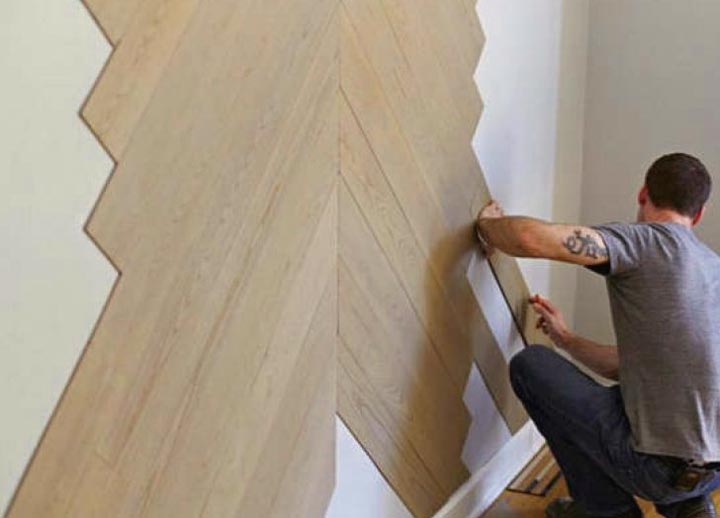
It is acceptable to use parquet glue. The main thing is that this glue is not dispersive.
For adhesive fastening, it is necessary to provide a smooth surface. If in the case of the floor, some unevenness is compensated by the substrate, then for the wall covering there is no such possibility. The adhesive composition that is used when installing laminate is not the cheapest, so it is applied in a thin layer; any unevenness on the wall reduces the adhesion area to the surface, which will have a detrimental effect on the reliability of installation.
As soon as the surface is leveled, it is necessary to apply a primer and then dry it.
After this, markings are applied, which will serve as a guide when installing the laminate panels.
REFERENCE! The most common laying pattern is in which adjacent rows are shifted by half.
The first row begins to be laid from half the panel. The glue is applied to the back side of the plank, as well as to the wall at the installation site. The plank is pressed against the wall for a while, after which it is peeled off so that the glue is weathered and pressed again until the glue sets. This technology is typical for all types of quick-drying glue. The only difference is the time for each stage. According to this algorithm, the first line is glued, and only then all the others.
The second row is mounted, starting with a whole plank, then the half goes again.
The undeniable advantage of this installation is the minimal loss of usable space.
There are many more negative aspects: the process is quite labor-intensive, significant consumption of expensive glue, water-free adhesive compositions are harmful. Leveled walls are not always able to withstand laminate.
Attention! If your plans include installing laminate on a small section of the wall, then it is better to immediately assemble the finished panel on the floor and glue it to the wall when assembled.
For clamps
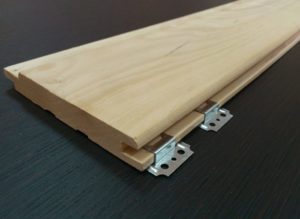 Glue is not the only way you can attach laminate flooring to a wall. One of the simple, but already proven methods is fastening with clamps. A clamp is a special bracket coated with zinc. Its purpose is to fasten lining, as well as laminate on ceilings and walls.
Glue is not the only way you can attach laminate flooring to a wall. One of the simple, but already proven methods is fastening with clamps. A clamp is a special bracket coated with zinc. Its purpose is to fasten lining, as well as laminate on ceilings and walls.
There are 2 types of clasps. A staple that has a serrated protrusion. Such fasteners are driven into the board and fixed with self-tapping screws on the sheathing or on the wall surface;
A bracket having a flat protrusion. It is used to press the protruding part of the board lock. Self-tapping screws are also required for fastening.
The clamps have several holes for fastening. At the edges there are two identical ones, intended for construction clips, and one in the center, for a nail or self-tapping screw.
The clamper should be selected based on the thickness of the laminate comb to ensure a tight fit.
REFERENCE! Laminated panels have different types of locks; sometimes, to securely fix the climber, you have to grind off the lock threshold, or even cut off the lock entirely.
On a wooden sheathing
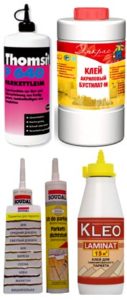 If the wall has uneven surfaces or many different communications that complicate the installation process, then lathing should be used for fastening.
If the wall has uneven surfaces or many different communications that complicate the installation process, then lathing should be used for fastening.
When installing laminate flooring on a sheathing, operations similar to installing lining are performed.
To install the sheathing frame, it is better to use wooden slats measuring 40 by 40 millimeters. The distance between the guides should not exceed 60 millimeters. The first board is laid with emphasis on the batten. This way the entire structure becomes stable and the laminate planks will not sag from their weight. Further installation occurs as in the case of a flat wall surface. A plinth for laminate flooring would also come in handy.
The advantage of this installation is the additional possibility of insulating the room, as well as sound insulation from other rooms. In addition, this type of installation ensures the reliability of the structure. The negative point is the loss of usable space.
On an aluminum profile
On some sites you can find advice that laminate flooring can be mounted on a metal profile. It is strongly recommended not to do this. A profile that is very convenient for installing drywall is unacceptable for laminate, since it is inconvenient to fasten panels with metal screws. In addition, these screws will eventually become loose and the cladding will deteriorate. In this case, it is not worth saving on time in preparing the sheathing; it is better to use a wooden structure than to then change the damaged laminate.
IMPORTANT! In fact, there are no particularly strict requirements or restrictions for using laminate. However, the issue of finishing must be approached wisely. It’s stupid to waste money and your own efforts on something that won’t last long.
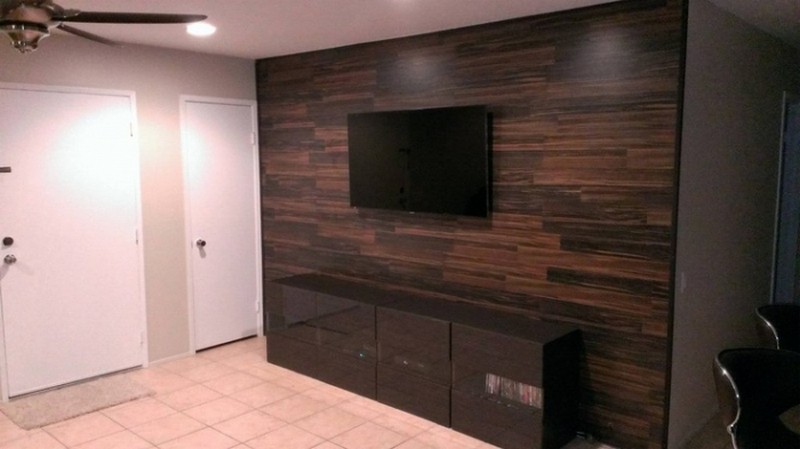 Especially these days, when there is a huge selection of materials for interior decoration.
Especially these days, when there is a huge selection of materials for interior decoration.
Laminate is unsuitable in rooms where there is no heating or high humidity. They should not be used to cover light partitions or surfaces made of soft material.
On a balcony or loggia, it can of course be used. But adhesive fastening will not work in such places, and the sheathing will reduce the already small space. The only remaining method of fastening is clamps.
But, in any case, before you start working, think over and calculate all the options for attaching the laminate. And after that, decide how to decorate the room.

